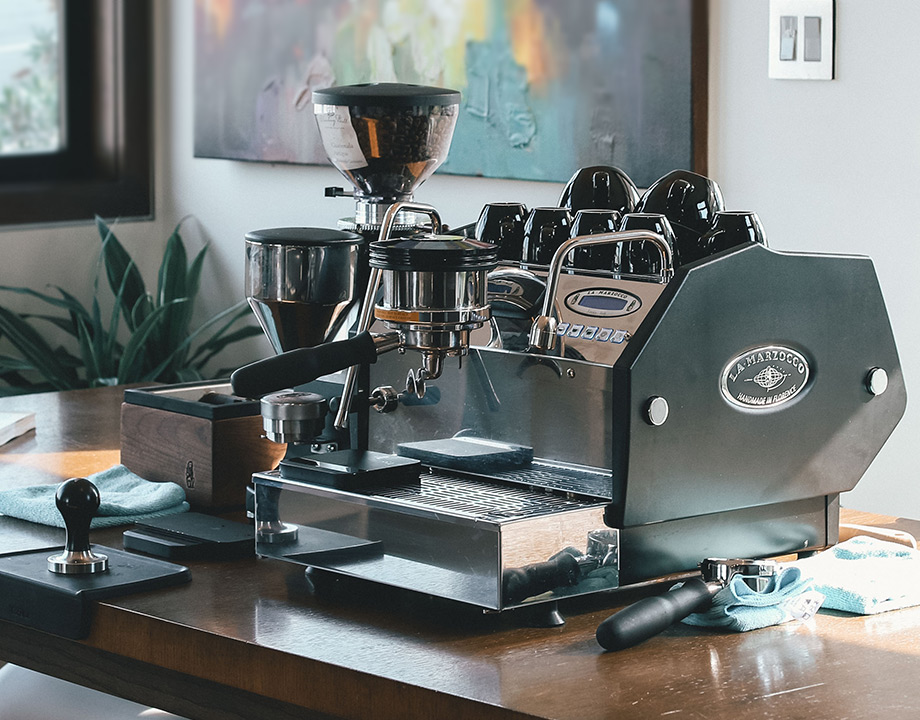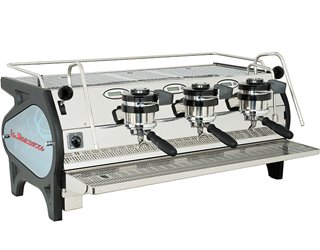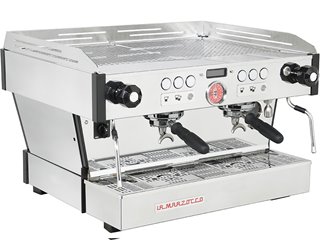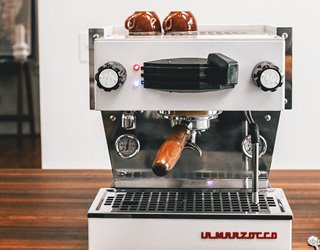How Espresso Machines Work: The Engineering Inside
How Espresso Machines Work: The Engineering Inside


Modern espresso machine design involves 3D printing, energy-efficient tech, modeling and simulation, and IoT.
Espresso machines are one of the most iconic pieces of equipment in any café or coffee shop. They can be sleek, bold, and operate with precision. More than that, they are designed to create an emotional bond between the machine and the barista—from the exterior aesthetics, shape, and color to the ergonomics and user interface.
Espresso machines are complex for their size. Key components are the pump, which draws water from the reservoir, the boiler, and the portafilter, part of the group head.
Most machines use an electric pump to force water through the compacted coffee in the portafilter—where preferred pressure is about 135 PSI (in comparison, car tires are about 30-35 PSI).
Water temperature is about 93-100 degrees Celsius. Water temperature must be very steady—otherwise, the rate of extraction varies, which impacts the flavor of the shot. Because precise temperature control is so essential, many manufacturers use proportional-integral-derivative controllers (PID) or digital temperature controls.
The hot, high-pressure water circulates through the coffee in the group head, which also includes a portafilter lock and a switch to regulate boiler pressure.
Florence, Italy-based La Marzocco is one of the biggest espresso machine manufacturers in the world, building them since 1927. Riccardo Gatti, a mechanical engineer and R&D manager for the company, discusses the complexities of designing espresso machines.
Q: Espresso machines have been around for a long time—how have engineering aspects changed over the last decade?
R.G: The first espresso machine was patented in 1884, but the commercial production of espresso machines did not begin until 1905.Over the decades, there have been many changes to the original design. Machines have moved from mechanically-controlled temperature-control systems to electronically-controlled proportional-integral-derivative (PID) systems, originally used in the automatization industry. There is also a strong move from being an electro-mechanical appliance to a more digital, internet-connected machine, capable of real-time, two-way cloud communication.
We also introduced machines that allow for varying pressure during brewing. Our engineers developed this system by using a variable speed gear pump. This pump gives us direct control over pressure, which requires a number of feedback loop controls and other systems that would typically be considered far outside of a normal espresso machine.
Q: It seems like there are lots of systems in play when designing espresso machines. What engineering skills are required?R.G: Engineering espresso machines require a mix of disciplines, which leads to an endless number of areas for research and learning. These machines are a beautiful, complex mix of disciplines including mechanics, thermodynamics, fluid dynamics, electronics, electrical, metallurgical, chemistry, and even computer and data sciences. Few engineers have the opportunity to work with all these disciplines within a single project.
Further Reading: Reimagining Pressure Vessel Design
It is this variety of work that we find the most interesting. Our products operate at high temperatures and pressure while interacting with water, which requires a strong understanding of material sciences. Marginally skilled users often operate espresso machines, so safety, comfort, and ease of use must also be factored into our designs.
One additional aspect of our engineering is the role of taste in our work. Periodically we require qualitative analysis of espresso. Most of our engineering team has been trained in professional coffee evaluation standards. One challenge the team faces is that it sometimes needs to taste a large amount of espresso in their testing. A few espressos are a fantastic way to stay energized through the day, but over-caffeination can make for an uncomfortable afternoon!
Q: What are some engineering challenges that exist with designing and making espresso machines?R.G: Espresso coffee is a surprisingly complex beverage both from its biological base, and the number of interlinked chemical extractions occurring at brewing. Such complexity requires us to look at a wide variety of systems that might not typically be seen by one team. We have physical processes like breaking the bean during grinding, and chemical processes which occur during brewing. Even the chemical composition of the water supply has an effect on the final espresso product.
Because of the complexity and biologic nature of coffee, we often work in areas where there are few existing rules or best practices, which gives us a large amount of freedom for creativity.
Q: Are there any interesting projects you can discuss?
R.G: One project required us to move 95 degrees Celsius water from a boiler located under a cafe’s bar to a dispensing point above the bar with 0.5 degrees Celsius stability. Because the system needed to be installed in a variety of locations, we had to create a system that could be installed at distances from 0.5 to 1.5 meters.
From ASME Archives: 5 Ways to Demonstrate Air Pressure to Children
To achieve this, we used modeling and simulation to understand temperature effects and created a custom control process to maintain the desired output temperature. A large portion of this work helped us understand when we should trust our sensors and when we should ignore them.
La Marzocco also designs espresso coffee grinders. One of the most interesting problems of grinding coffee is the static charge created when coffee is being ground: Anyone who has ground coffee at home is likely familiar with this annoyance. In order to address this pain point for our users, we designed an ionization system that removes the static charge from coffee.
Q: Using 3D printing to give engineers more creative design options, as well as reduce the size of products or components, is a top priority in some manufacturing fields, such as aerospace or medical. Is this also impacting espresso machines?
R.G: In the domestic espresso machine segment, there is a strong desire to reduce the size of the machine. For commercial systems, shop owners want to be able to personalize or customize their machines for their café.
Test Your AM Knowledge With this Quiz: How Well Do You Know Your 3D Printing Materials?
We are very excited about one investment we made in additive manufacturing. Together with a nearby university and one of our component suppliers, we have obtained a Renishaw 400 3D printer. This machine allows us to print with 316L stainless. This has greatly increased the speed at which we can develop new prototypes and has given our design team the opportunity to create mechanical solutions previously impossible to realize.
Working with our Renishaw printer, we have been able to create prototypes that, until now, required investment tooling to produce. We recently 3D printed an entire group head—one of the significant components of the machine which is usually cast—in order to create a new prototype. This prototype was then fixed to our boiler by welding. Previously we would have been required to create a new casting to complete this one test.
Q: Is there anything on the horizon that will improve the design or engineering of espresso machines?
R.G: We are most excited about the future of the sustainability of the espresso machine. Currently, the largest energy consumer in producing an espresso from plant to cup is the espresso machine; we have several projects underway that will help us reduce this energy consumption.
Related Manufacturing Blog Post: Engineering a Future of Sustainable Manufacturing
Our work is focused on two primary areas: reducing heat loss and the volume of heated water. Although reducing heat loss is a fairly simple solution mechanically, it has interesting thermodynamic effects. By retaining more heat, we need to be much more conscious of potential overshooting temperatures. This change requires us to re-tune our control systems to account for this loss of radiated energy.
Our work in reducing the volume of heated water introduces other interesting challenges, like rapid scale accumulation. This area of study is of great interest to us because of the environmental impact, as well as the new areas of study it opens up for us.
Mark Crawford is a technology writer based in Corrales, N.M.








